|
I've been running campaigns long enough that I've stacked up NPCs like Pokemon cards, ready to unleash them onto unsuspecting players. Sometimes they work wonders, other times they suck wind through a straw. Let's take a look at a few and see what I could have done better. Jedrek Remo - Blackweave Monk |
1) The Concept
Small, but mighty they call me. And when they say cute and cuddly, effervescent and mirth, I shall call the lightning upon their hubris and laugh maniacally in their wake.
Small, but mighty indeed! 2) Heroic Array = 17, 15, 14, 12, 11, 103) Racial Traits
Slight and sly, Gnomes are smart and charismatic, doing what they can to slip by unnoticed (if they want).
So YAY, +2 Intelligence, +2 Charisma. Fey Ancestry - I'm fey when it counts. Master Trickster - Ghost Sound cantrip for free. Reactive Stealth - stay hidden when initiative starts. Trickster's Cunning - extra bonus to saves vs. Illusions. Fade Away - Racial Encounter Power that allows me to go invisible when I take damage! |
4) Class Traits and Abilities
STR 11 (+0)
DEX 12 (+1)
CON 16 (+3) = 15 + 1 at Level 4.
INT 16 (+3) = 14 + 2
WIS 10
CHA 20 (+5) = 17 + 2 + 1 at Level 4.
Being Small, my speed is only 5 squares, but it helps to have some Low-Light Vision too.
Armor is Cloth and Leather only, but my Defense Bonuses are +1 to Reflex and +1 Will.
Weapon Proficiencies: Simple Melee, Simple Ranged
1) ELDRITCH BLAST - Your At-Will powers are intrinsically tied to your class choice by theme and pact, so Eldritch Blast is an automatic At-Will power. Your Eldritch Pact decides your other At-Will power...
2) ELDRITCH PACT - You get three choices: Fey, Infernal, Star. This selection decides your second At-Will power, as it is mechanically tied to the flavor of the pact. Star punishes movement toward you with Dire Radiance (Movement), Fey makes you Invisible with Eyebite (Buff), Infernal channels additional damage to a target when I take damage with Hellish Rebuke (Offense). Each one is still an initial attack roll, with the appropriate follow-up bonus. I'm going with Hellish Rebuke, because the language specifies that the target doesn't have to be the one that damages me; I could take damage from something else entirely, and still automatically deal 1d6+3 fire damage to my chosen target. That's nice. Also, I get Dark One's Blessing, which grants me temporary HP when a creature under my Warlock's Curse (see below), dies.
3) PRIME SHOT - As long as I'm the closest to my target (so no ally is closer than I), I get a +1 to all ranged attack rolls against that target. Nifty.
4) SHADOW WALK - As long as I travel at least 3 squares on my turn, I gain Concealment until the end of my next turn. Which is great, because I plan to keep my distance whenever possible.
5) WARLOCK'S CURSE - once per turn, as a Minor Action, I curse a dude. That dude is more vulnerable to my nasty attacks and takes extra damage (+1d6 for now). So there.
6) IMPLEMENTS - Warlocks make use of specific powerful wands or rods or pact daggers that add extra powers or bonuses to their spells. Cool beans.
5) Powers (Spells)
At-Wills
1) Eldritch Blast - you can choose your Charisma or Constitution to help out with this spell, but you can't change later. Charisma is my OBVIOUS CHOICE with a +5 modifier. With the added benefit of this spell counting as a basic ranged attack, allies that grant such opportunities open up a world of hurt against our enemies.
2) Hellish Rebuke - Constitution-based ranged attack vs. Reflex, so 1d6+3 fire damage if I hit. The added bonus is they take an extra 1d6+3 fire damage if I take ANY damage before the end of my next turn.
Encounters
Racial) Fade Away - We've talked about this. Take damage, go invisible!
1st Level) Diabolic Grasp - Another Constitution-based power that hits nice for 2d8+3, and will move the target 4 freaking squares!
3rd Level) Fiery Bolt - 3d6+3 fire damage, and burst 1 with 1d6+3 fire damage, with another +3 for my Intelligence. Ouch.
Daily
1) Armor of Agathys - Gain some 13 Temporary Hit points and any enemy that starts its turn adjacent to me takes 1d6+3 Cold damage until the END OF THE ENCOUNTER.
Utility - Daily
2nd Level) Fiendish Resilience - Minor Action to give myself 8 temporary hit points. Meh. No choice in the matter.
FEAT SELECTION
1) Improved Initiative - the earlier I go, the better. +4.
2) Improved Dark One's Blessing - when a Cursed enemy drops to 0, I'll gain 7 temp HP instead of 4.
4) Magic Of The Mists - retain Fade Away when I attack. Booyah.
6) Gear and Overview
Basic Ranged = Hand Crossbow; +5 to hit, 1d6+1 damage --- Hand Crossbows have +2 Proficiency + Dex (1) + 1/2 Level (2)*
**I don't plan on using this, as my Eldritch Blast counts as a Basic Ranged Attack. 1d10+5, with a +9 to hit is way better.**
Implement: Magic Tome = +1 Attack and Damage rolls, but on a Critical add 1d6 damage.
At-Will Powers: ELDRITCH BLAST, Hellish Rebuke
Encounter Powers: Fade Away [R], Diabolic Grasp, Fiery Bolt
Daily Powers: Armor of Agathys
HP: 30 (15 at level 1, +5 per level [15])
Healing Surges: 9 (6+3) Surge Value: 7
AC: 15 --- (10+1/2 level [12]+Dexterity Mod [1]+Leather Armor [2]
Fortitude: 15 --- (10+1/2 Level [12]+Con Mod [3])
Reflex: 16 --- (Int +3 + 12 + 1)
Will: 18 --- (Cha +5 + 12 + 1)
Trained Skills: Arcana, Bluff, Intimidate, Streetwise
Gnome made. Let's blow some stuff up.
See you at the table.
-Adamus
The Stuff Of Legend...
Legendary Resistance / Legendary Actions
Conversely, legendary beings are often, but not always, solo endeavors. In other circumstances, such encounters can feel a little...one-sided. As a party of 5-7 warriors gang up on a single creature, that's usually 5-7 swings on it before it gets its turn.
Legendary ACTIONS provide a pseudo-set of extra turns each round for a Legendary Creature to use, simulating its great power and rebalancing the economy of the encounter.
At the close of another creature's turn, not its own, this creature can spend 1-3 Legendary Actions to perform certain tasks, attacks, or powers, as dictated by their stat block. Some powers burn only 1 LA, while others can burn 3 at once, especially if the creature is attempting something very powerful. Sometimes it's a movement or an extra attack, or a bonus spell. Whatever it is, stay alert! There's a reason these things are legendary.
But to be clear:
Legendary Resistances only recharge during a Long Rest, but...
Legendary Actions return at the start of the creature's turn EVERY ROUND.
So you might force some saves and use up their resistances...but they're just as dangerous with their Legendary Action economy.
A Creature's Lair
A Legendary being often has a place it calls its home. A "lair," if you will.
Such a place tends to grant them superior bonuses to their defenses, like a homefield advantage, and often pose great danger to an unprepared party.
A Lair in a Legendary encounter acts on an Initiative count (often count 20) like a character, but you can't attack it or defeat it. Maybe you're fighting in a volcano, and a wave of extreme heat hits you; or a pulse of necrosis randomly strikes someone within range of the dark altar of the Lich. And many effects get worse the longer the fight goes on, so entering a Lair with a clear strategy will help keep your party alive and (hopefully) end this encounter quickly in your favor.
Pro Tip: If ever you can engage a Legendary Creature outside of its Lair, do so. Those homefield advantages, coupled with its already frustrating extra actions and resistances, make these fights particularly nasty.
Other Special Traits
INNATE SPELLCASTING
Some monsters have the ability to cast specific spells as part of their features. These spells, unless otherwise noted, are always cast at their lowest level. If it's a cantrip, we can assume the creature's challenge rating (CR) as its level if we need to determine damage (unless it's otherwise noted).
Innate spells often have other restrictions, like "target self" or "Reaction only."
SPELLCASTING
A monster with the Spellcasting feature is considered to have a spellcasting level and an arsenal of spell slots, as if they were a player class. Such a creature can choose to cast spells at higher spell slots, just as a player might, giving a large bredth of caster flexibility (and making them very dangerous).
PSIONICS
Psionics is a form of spellcasting that allows a monster to cast spells using only the power of its mind. This tag can be attached to both Innate and standard Spellcasting, and carries no additional rules, but other parts of the game might refer to it.
Assume, though, that a spell cast using Psionics does not require components. ;)
Next time, we delve into the depths and visit one terrifying little beastie. I mean it, this thing's the stuff of nightmares!
See you at the table.
-Adamus
1) The Concept
Recently, I've been drawn to the image of an almost Dr. Whovian holy warrior. The idea being that through the ages, this warrior has been reincarnated and reborn in many different bodies, all attempting to vanquish evil This can be hard to pull off with mechanical justification without homebrew in 5th Edition, but 4TH EDITION has this concept down with the addition of the racial option, Deva (from the Player's Handbook 2). Couple this with the class option (also from Handbook 2) of Avenger, and we've hit the ground running.
2) Heroic Array - 17, 15, 14, 12, 11, 103) Racial Traits
Devas are immortal spirits that are born and reborn perpetually into new physical lives, so it follows that the bonuses they enjoy are more mental representations.
Long way of saying, YAY, +2 Intelligence, +2 Wisdom. Astral Majesty - +1 to all my defenses against bloodied creatures. Astral Resistance - resistance to necrotic damage and radiant damage. Immortal Origin - I guess I'm considered Immortal when it counts. Memory of a Thousand Lifetimes - Racial Encounter Power that adds a 1d6 bonus to an attack, save, skill, or ability check. |
4) Class Traits + Ability Distribution
STR 11 (+0)
DEX 18 (+4) = 17 + 1 at Level 4.
CON 12 (+1)
INT 16 (+3) = 14 + 2
WIS 18 (+4) = 15 + 2 + 1 at Level 4.
CHA 10 (+0)
Armor is Cloth only, so I'm pleased that my Defense Bonuses are +1 to Fortitude, Reflex, and Will.
Weapon Proficiencies: Simple and Martial Melee, and just Simple Ranged (so I guess I'm going up close and personal)
Now, that Armor proficiency feels a bit disappointing, but the Avenger gets a few little features to help out their "battle cleric" status:
1) ARMOR OF FAITH - as long as I'm not in heavy armor or using a shield, my deity rewards my courage in the face of certain doom with a +3 bonus to my AC.
2) AVENGER'S CENSURE - I choose one of two bonuses that tie directly to a creature that is the target of my Oath Of Enmity (what up, 5E Vengeance Paladin?), Pursuit or Retribution. I like the damage bump (3 from my Int) of Retribution, as well as the synergy in Power selection later (you'll see), so I'll go with that.
3) OATH OF ENMITY - select a chosen prey, and take the best of two attacks on them until the end of the Encounter as a Minor Action. Woof. Probability is now on my side.
4) CHANNEL DIVINITY - you start with two Channel Divinity powers (more if you take certain Feats): Abjure Undead (deal sick damage to one undead target and immobilize them) and Divine Guidance (let an ally roll twice for an attack). Both Encounter powers, so I've got 'em each fight.
5) Powers
At-Wills - my focus is on dealing decent damage and chasing down opponents so I can smite the crud out of them:
1) Bond of Pursuit - Weapon attack plus Wisdom Modifier damage, but the kicker is that I can chase down the target if he ends his turn away from me.
2) Bond of Retribution - decent damage and radiant damage tied to my Intelligence if an enemy other than my target smacks me. That'll learn 'em good. :)
Encounters
Racial) Memory of a Thousand Lifetimes - didn't like that roll? Let's add 1d6 to it!
Class Feature [CF]) Oath of Enmity - roll two attacks and take the better result for the whole fight or when the thing dies. All that for a Minor Action.
CF) Channel Divinity: Abjure Undead - immobilize and wreck one undead creature.
CF) Channel Divinity: Divine Guidance - when an ally attacks your Enmity target, have them roll twice and take the better result. Yes please hit my quarry!
1st Level) Avenging Echo - Don't stand so close to me! Until the end of my next turn, enemies near me take 8 radiant damage (5 + 3 from my Int because of Censure of Retribution).
3rd Level) Halo Of Fire - same deal as Echo, but better weapon damage, and this time it's 8 fire damage.
Daily
1) Temple Of Light - Double weapon damage + Wisdom radiance AND it creates a zone of extra damage that follows the target. Creatures struck by me in such a zone take extra damage. I see this limiting a target's movement, as the spillover damage to their own allies is less than helpful.
Utility - Encounter
2nd Level) Resonant Escape - triggered by being hit, or missed, I get to teleport a few squares away. Cool.
FEAT SELECTION
1) Improved Armor Of Faith - an additional bonus to AC that increases at later levels (+1 for now)
2) Melee Training - effectively (if I pick Dexterity) turns my basic melee attacks into 5E finesse weapons, so I can use my Dexterity modifier to slice the junk out of enemies instead of Strength.
4) Melora's Tide - another Channel Divinity option that grants some regeneration to me or an ally until we're not half dead.
6) Gear and Overview
Basic Ranged = Crossbow; +8 to hit, 1d8+4 damage --- Crossbows have +2 Proficiency + Dex (4) + 1/2 Level (2)
At-Will Powers: Bond Of Pursuit, Bond Of Retribution
Encounter Powers: Memory of a Thousand Lifetimes (Racial), Oath Of Enmity (CF), CD Abjure Undead (CF), CD Divine Guidance (CF), Avenging Echo, Halo Of Fire, Resonant Escape (Utility)
Daily Powers: Temple Of Light
HP: 33 (15 at level 1, +6 per level [18])
Healing Surges: 8 Surge Value: 8
AC: 20 --- (10+1/2 level [12]+Dexterity Mod [4]+Armor Of Faith [4]
Fortitude: 14 --- (Con Mod [1] + 12 + 1)
Reflex: 17 --- (Dex +4 + 12 + 1)
Will: 17 --- (Wis +4 + 12 + 1)
Trained Skills: Religion + Acrobatics, Heal, Perception
Time to kick some butt, Vered Felstaff. Let's rock.
- Adamus
SPEED TYPES
A monster with a burrowing speed can tunnel through sand, earth, mud, or even ice! Bad news on a tactical map, but the monster can't burrow through solid rock unless it has a feature that says so.
CLIMB
Climb speed lets the creature scale vertical surfaces using all or part of its movement, and they don't have to spend extra movement in order TO climb.
FLY
Monster with fly speeds can use that movement to, you guessed it, FLY. And some monsters have the ability to Hover, making it difficult to knock them out of the air. Any decently smart creature with a fly speed (and a breath weapon) should be feared on a tactical battlefield.
SWIM
Well, these are getting simple. Creatures with a swim speed can swim their speed! And they don't even have to use extra movement... Who'da thunk? Good to note, though, that a swim speed can only be used in a liquid; a semi-solid material, like mud, does not support a Swim speed (Burrow would be more appropriate), but in the same vein a Burrow speed does not allow you to swim (without costing extra movement as normal).
EXTRA SENSES
A monster with Blindsight can perceive its surroundings without relying on sight, depending on the radius. Creatures without eyes, like an ooze or grimlock, will usually have this sense, as do creatures that might use echolocation (like a bat) or something with heightened senses (like a dragon).
A naturally blind monster might also use this term to indicate the MAXIMUM RANGE of its perception.
DARKVISION
A creature with darkvision can see in the dark within the specified radius. Just like with player characters, they can see in dim light as if it were bright like, and in darkness as if it were dim light. And, just like PCs, the monster can't discern color palettes, only shades of gray. Expect creatures who tend to live underground to have this special sense.
TREMORSENSE
A monster with Tremorsense can detect and pinpoint the origin of vibrations within its specified radius, provided that IT is not in contact with the same ground or substance. No, it cannot be used to detect flying or incorporeal creatures. Expect monsters that tend to burrow, like an Ankheg or Umber Hulk, to also have this ability.
TRUESIGHT
A popular thing among high-level players, a creature with Truesight can see (out to a certain range) in normal and magical darkness, see invisible creatures and objects, automatically detect visual illusions and succeed on saving throws against them, and perceive the original form of one who is a shapechanger or someone transformed by magic. Furthermore, the creature can see into the ETHEREAL PLANE out to the same distance. A few ancient or psionic creatures might have this ability, but it is much more rare.
TELEPATHY
This is a magical ability that allows a creature to communicate mentally with another creature within the specified range. The contacted creature doesn't need to share a language in order to communicate, but it needs to understand at least one language (so the Google Translate has something to do). A creature without telepathy can still receive and respond to telepathic messages, but can't initiate them.
A telepathic monster doesn't need to see the contacted creature and can end the contact at any time. The contact is also broken if the two creatures ever exceed the range of the sense. It often goes without saying, but contact is broken if the creature is incapacitated.
Note: A telepathic creature within an Antimagic Field or another location where magic does not function will not be able to send and receive telepathic messages.
DAMAGE TERMS
When a creature is Vulnerable to a damage type, it is assumed that the type deals twice as much damage to it. Some DMs will have players roll twice as many dice, or, for speed and efficiency, simply double the number rolled. Whatever the method, the creature can be considered "weak" to this type, and will therefore suffer more when dealt it.
RESISTANCES
A very common term among the monsters in 5E, a Resistance indicates the creature will only suffer half of the damage (rounded down) dealt to it of this type. It can be expected that many Fiends will probably be resistant (if not Immune) to fire damage.
IMMUNITIES
An immunity indicates that the monster either cannot be affected by the named status effect or suffers no damage (even if an ability might punch through a Resistance otherwise - ahem, Elemental Adept feat - cough) from the indicated type. Powerful undead can be Immune to necrotic damage, or a large fiend Immune to fire damage, or how a construct might be Immune to being poisoned.
MAGIC RESISTANCE
A trait often reserved for older, more powerful beings, (the Yuan-Ti Purebloods also enjoy this at level 1 in Volo's Guide To Monsters) a creature with Magic Resistance rolls with Advantage against ANY MAGICAL EFFECT THAT REQUIRES A SAVING THROW. Any. Magical. Effect. Yeah, that's awesome...or terrible, depending on which side of the screen you are positioned. :)
Next time on Dragonball Z
See you at the table, sipping on my coffee.
...Gods I need more coffee...
-Adamus
Why This One?
I was mobile, strong, and very dangerous up close. I didn't have a bunch of Hit Points, but my enemies were often dead before they could deal much damage. I was beautiful. And with many fond memories flooding back, I figured I could ride this momentum into our first main build in this system.
1) Ability Scores, Racial Improvements, and Distribution
RANGER Key Ability Scores: Strength, Dexterity, Wisdom
Dragonborn Ability Score Improvements: +2 Strength, +2 Charisma
So, the race bonus didn't entirely line up with my needs, but I didn't really care. Plus, since we're building each of these to LEVEL 4, so I've got an ability score increase to think about too. Let's flesh out my scores.
STR = 14+2 = 16 +1 at Level 4 = 17 (+3)
DEX = 16 (+3)
CON = 12 (+1)
INT = 11 (+0)
WIS = 13 +1 at Level 4 = 14 (+2)
CHA = 10+2 = 12 (+1)
2) Race Features
Pretty run of the mill here. Medium creature, moves 6 squares each round, no darkvision (bummer).
Draconborn Fury - when I'm Bloodied (down to half or below half my Hit Points), I get a +1 bonus to all my attacks.
Draconic Heritage - makes my Healing Surge value bigger (1/4 my total HP + my Constitution modifier).
DRAGON BREATH Power - the reason I took the race in the first place... An excellent Encounter Power.
3) Style, Powers, and Feats
On top of this, a Ranger gains the Hunter's Quarry feature: as a Minor Action, you can designate the nearest enemy to you that you can see as your Quarry. Once per round, you can deal extra damage to that quarry when you hit them, and that damage increases every 10 levels or so (ours will be at +1d6 for now).
At level 1, I need to select 2 At-Will Powers, 1 Encounter Power (useable once per fight), and 1 Daily Power, plus my Racial Power. Level 2 I get a Utility Power, Level 3 another Encounter Power, and Level 4...an ability score increase. Also, at Levels 1, 2, and 4, I select a Feat.
At-Wills are pretty obvious here:
1) Twin Strike - effective double attack.
2) Hit and Run - run past, slice through, keep running and no Attack of Opportunity.
Encounters
Racial) Dragon's Breath - we'll go with lightning, I think. :)
1st Level) Evasive Strike - I can shift around the board 2 squares before or after the attack, and I deal double weapon damage + my Strength modifier.
3rd Level) Thundertusk Boar Strike - another double attack with a push; if both attacks hit, I push 'em a number of squares equal to my Wisdom Modifier (which I want to increase!).
Daily
1) Hunter's Bear Trap - Double weapon damage + Strength + slowed target + 5 ongoing damage if they can't save to stop it. Ha.
Utility - Encounter
2nd Level) Yield Ground - triggered by being hit, I can move away and gain a +2 bonus to all of my defenses. Gotta watch myself!
FEAT SELECTION
1) Dragonborn Senses - gain Low-Light Vision, and +1 to Perception
2) Enlarged Dragon Breath - increases the size of my Dragon Breath. Booyah.
4) Dragonborn Frenzy - +2 damage when I'm bloodied. Because often the best protection is to eliminate threats faster, and that's damage.
4) Gear, Skills, and Proficiency
+ Weapons are a little more vast, with Simple and Military grade melee and ranged. Let's snag two Longswords to lay down the law with a little higher accuracy, and a Longbow for good measure.
+ Defense Bonuses: +1 Fortitude, +1 Reflex
+ Hit Points at first level end up being only 13 (12+Con modifier), with increases of 5 per level, so add another 15 on for only 28 HP at level 4. Even with Toughness, that only raises it to 33 HP. Argh. We'll see if we can do something about that.
+ Healing Surges = 7 per day, at 8 HP per surge (thanks Dragonborn).
+ Trained Skills (+5 training bonus): Dungeoneering or Nature (I pick NATURE), plus four others from a decent list - let's go with Acrobatics, Athletics, Perception, and Stealth.
5) Overview and Future Choices
Basic Ranged = Longbow; +7 to hit, 1d10+3 damage
At-Will Powers: Twin Strike, Hit and Run
Encounter Powers: Dragon's Breath, Evasive Strike, Thundertusk Boar Strike, Yield Ground (Utility)
Daily Powers: Hunter's Bear Trap
HP: 33
AC: 18 --- (10+1/2 level [2]+Dexterity Mod [3]+Armor Bonus [3]
Fortitude: 16
Reflex: 16
Will: 13
Yeah. That's about right. Welcome back, Helaku Stormwind. Let's play.
See you at the table.
- Adamus
What The Black Sheep Did Right
Now, I'm not new to 4th Edition. I cut my teeth on 1st edition, and scaled those characters through 3.5 and Pathfinder, then we churned out a new campaign in 4th Edition. Sure, there were elements I didn't like - the out-of-left field feel, the power sets, the strange board game nature of it all - but it was still D&D, and we played it through all the same. The mechanics were just the mechanics; we still had our story to tell.
Fast-forward to 5th Edition, and our now about 4 years teaching it and running it, and returning to 4th edition is...not that bad.
There are a great many things that 4th Edition does very well.
1) Roles are clear. Each class is broken down into one of four main categories of roles: Controllers, Defenders, Leaders, and Strikers. With your lives on the line, and the mechanics to back it up, there's never a question of what role you are supposed to fill; maybe a question of a secondary role, but not the primary.
2) Tactics are KEY. Immediately, in fact. Our first fight we played like 5th edition - Goblins, no trouble, right? Wrong. Each goblin has more hit points than I do (and I'm a Minotaur Warlord), and none of us could go toe-to-toe with any one of them. It's expected at a fight that two things happen - you immediately use your Encounter powers (more powerful attacks/spells usable once per fight) to eliminate threats early and second, you draw fire to the Defender, while everyone else wrecks enemies from a protected position. Oops.
3) Action Economy Works. On your turn, you have a Standard Action, Minor Action, and a Move Action. Now, these aren't necessarily the same as 5E's Action, Bonus Action, and Movement, mainly because EVERYONE has a Minor Action (like drawing a weapon, opening a door, etc.) available, and certain powers or abilities consume one of those three actions. As long as you have the action type available, you can spend the power, so if you've got a power that's a Minor, another a Standard, and another a Move...you're using three cool things that turn. You're not moving, but still, three cool things. Also, also, you can make your Standard into two more Minor Actions instead, making the economy more flexible. When you're learning the game, that can add time, but, just as with any system, you get faster. And, because this system IS so mechanic-driven, it's rare that you'd have a strange interpretation mix-up that would bog down play anyway.
4) All of your stats are important, with three mains. For each class, there are at least three primary ability scores, and each of your powers will use one of them. Often, INTELLIGENCE is one of those, so the worth of your stats is elevated and definitively depends upon your class, which is refreshing.
Controllers
Defenders
Leaders
These classes encourage and motivate their adventuring companions, but just because they fill the leader role doesn’t mean they’re necessarily a group’s spokesperson or commander. The party leader—if the group has one—might as easily be a charismatic warlock or an authoritative paladin. Leaders (the role) fulfill their function through their mechanics; party leaders are born through role-playing. Obvious Leaders are found in the Cleric and Warlord, with the Bard (duh), Shaman, Ardent, and Runepriest fulfilling it later.
Striker
Perspective
In a lot of ways, a blank canvas can be terrifying, so the embedded structure of 4th edition helps support new players in selecting limited powers that further their selected role. Because of this, I thought it fun to further explore this through character building. So, for a little while, each Tuesday at noon, expect a bonus blog on character building...and we'll kick it off with the Ranger in 4th Edition. See you there.
We'll have one last dungeon crawl at level 20, 5 years later, as our epilogue next week. After that, 150 years pass into the fourth age of Io, and we start anew at Level 2. It's been quite a journey, and they're not the easiest group to run ;), but the lessons are real with this crew and I've changed a lot since we started.
Here's what I picked up.
Homebrew Small
The system is deceptively simple and highly accessible, but I had listened to the cry-babies online declaring it "D&D Basic," and decided to create specific Prestige Classes based around lore and player discovery. It created a very special and unique option inside my custom world, where "secret" classes actually existed that could augment player builds, and could only upgrade through experimentation, player exploration, and discovery into the deep layers of the world's history. I still think it was a great decision. It adds a lot of rewards for players that invest of themselves in the history and machinations of this fantasy you've spent so much time on.
But after two years of deep-diving mechanics, game mastering, game design, player-master interaction, social development, and the study of flow... I realize I made a boo-boo. Not a mistake in flavor, nor in reward, but in mechanics.
It's a little thing, and the more you do the more you realize that "it's the little things" that matter most. In this case, my Prestige Class of the Aegis - a powerhouse of a Cleric that wields the souls of the dead to unleash fury upon her enemies - and the final form of a Ranger with a Legacy Bow - a weapon that levels up with you; semi-sentient and created by a god - created an issue with Action Economy and TMRPA (Too Much Rolling Per Action), respectively.
The Aegis's main mechanic involves gaining Furies - souls of dead warriors unwilling to pass on - and spending them like Ki Points to unleash powerful attacks, augment healing spells, and create more options. Unfortunately, as long as you have Furies to burn, there's no limit to their use, and at high level in any class, you're already managing so much... It eats up time easy when you're able to summon an Action Surge every turn AND cast AND fight. On the other side of the table, the crazy-bow-now-living-winged-armor attached to the Ranger added an extra attack, but the main time suck is derived from two main extra elements in play: the bow requires a Con save when it hits or the target takes extra necrotic damage. It's also got a crazy bonus (with a high level character with max Dex), so hitting is often, mean more rolls for me. On top of this, IF she rolls a natural 20 on the bow, she rolls Constitution damage on the target, on top of everything else. Moving forward, leveled up weapons will deal static numbers, instead of rolling more... And in terms of time, it always feels more effective in flow and execution to have a power spike (the awesome power of rolling 8d6 for a Fireball) than many small spikes of damage, so if I can eliminate the parceled rolls where I can, everyone still feels effective, but turns take less time.
In the fourth age, Io-Shar, though it is a more industrial time period of naval exploration (after the world flooded), home-brew materials are much tighter and more balanced; action economy manipulations have higher costs, and there's less compounded rolling. The bonuses are also much more subtle; there isn't a need to add a whole new system to track when it could be as simple as a palette swap in damage type. New age, new prestige classes and custom feats open up (hello, Knife Expert), but this play test has heavily informed what special elements are extended to the player. A little goes a long way - there is an elegance in that design, and it keeps the playing field even across the table.
I look forward to the interesting things I can give them this time around. :)
Self Actualization / Player Agency
Introduce them as careful lore drops, powerful relationships, killer resources...but never have them solve a problem for the players. Good gods. Holy cows on toast with mayonnaise. Don't do it.
NPC ex machina is not the way to go if it comes out of nowhere.
Well-established order of guards and officers? Sure thing. Sudden mass teleport wizard is sudden. If it feels like a puzzle to the players and they're enjoying solving it, don't help them with an NPC. Hints are fine, solutions can hurt the party.
...Unless they're utterly lost and confused. Help them along, but don't do it for them. EVER. If you do, you run the risk of insulting them and equally "playing without them." And that's just rude. ;)
Clear Intention Of Background
Now, this group in particular was one where I didn't get that feel easy from most of them. With a high mix reactive players with a few proactive ones, some offering extensive background information while others offered a few sentences explained away, the hindsight of the matter is obvious but the player execution and my observations were misunderstood often. When you give a hook that to you is obvious, but the player misses completely, and therefore doesn't pursue it, one might assume that the view of their background fits into the former category.
Compounding confusion, still, are those that feed very little into the overall narrative, but then wonder when "their story" will be featured, but say nothing - instead assuming they were forgotten. Please talk to your DM; I won't be offended - it's much worse if you don't approach the issue until the end of the campaign and I wonder why NO ONE SAID ANYTHING. :)
Like many GMs out there, I'm not a *dick*, but I can't read minds. There are so many stories of a player misinterpreting a DM's intention, or of the GM making an assumption about a scenario that ended up being incorrect, or seeming to ignore obvious intentions. In the same vein of: "if I knew it was a problem, I would have fixed it right away," though we can intuit quite a bit the longer we're at the table, our human nature begs us to err. We miss things, we get caught up in the narrative, and we lose sight of players. I am imperfect, as are we all, so open communication helps everyone. Also, GMs, CHECK IN WITH YOUR PLAYERS MORE. I picked this up as a requirement when I started Gray Owls and OH MY GOODNESS is it an essential element at every table. I don't know how it took me that long to put in my workflow OMG.
Moving forward, with each new campaign, I've started to put together a few questions for character creation; some fulfill the essential detail of world building, while others touch on player intentions - what do they want to get out of this experience?
1. Where was your character born? Describe it as best you can; do you reflect on this place positively or negatively? Would you ever want to return? Why? Do you have a family there? How did they treat you? Were there any important people in your life growing up? Why did you leave?
2. What is your character's goal in life; what do you seek? When did you "grow up" and start taking care of yourself?
3. What emotion best describes your character? What emotion do you bring out in others?
4. How do you carry yourself? What are your means/dress/attitude as you move through life? What do find valuable?
5. What is your comfort zone? What is your greatest fear? Personal tastes, quirks, and opinions?
6. Player: What kind of story do you see your character fitting into? What role do you see them filling?
7. Player: Please weigh (3 being most important to you, 1 being least important) the Three Pillars - Combat/Social/Exploration
8. Player: How do you interpret your play style? What are your pet peeves? What do you respond well to?
9. Player: How do you want your character to die? (this is more important than you think; it strikes at the heart of our own values - your story could end abruptly, and if it did, how would they meet that end do you think?)
10. Player: Do you want your background details to be referenced or hooked into the story? You can always change your mind - just let me know.
Now, especially number 10 I can see a few of my fellow GMs hemming and hawing over. "You mean we have to bend over backwards to make this character's weird backstory fit into OUR GRAND NARRATIVE??? How dare they assume they'd be so important - they should be happy just to be playing!" ...Hmm.
This is a group game, and it's really important that everyone understands the type of experience they're getting into. Clear expectations are a good thing; Trust and Empathy are two main factors to building a great table of play. Now, do I have to make that character's stuff the most important element all the time? No. Absolutely not. But I can give them sprinkles of content more directly spun into the story. It won't happen all the time, and sometimes it might not even come up, but IF I KNOW going into this that there is a clear desire to wrap up a specific story thread, I can find more ORGANIC ways to weave and tie these disparate threads together. It might even be a limiter of location; hints of the conflict in the north (echoes of another character's story), but we don't need to go there now. It's just a sprinkle.
Everyone's connected to something. Everyone's from somewhere. We don't know everything going in; the mystery is the fun part, and some players want their mystery. Others don't care for it; I need to know which one you are.
Players Learn Too, And Comfort Tells Stories
The more this group learned about how the game works, the more effective they became, but also the more some of them drifted toward other builds, concepts, and ideas. This type of momentum is helpful to notice; in a way, it reveals a player's true nature. Like the first campaign was our test run. The next one is where we're going to really shine; players and DM alike. We take what we learned about the game, ourselves, our styles, and how to advocate for the experience we want...and finally, just PLAY.
-Adamus
Writing this blog each week takes time, energy, and focus. If you enjoy reading it, maybe consider taking a look at my Patreon, and helping support its creation.
Adam Summerer
Professional Game Master musician, music teacher, game designer, amateur bartender, and aspiring fiction author.
In short, I'M A BIG NERD.
Archives
April 2024
September 2023
July 2023
June 2023
May 2023
April 2023
March 2023
September 2022
August 2022
July 2022
June 2022
May 2022
April 2022
March 2022
February 2022
January 2022
November 2021
August 2021
July 2021
June 2021
May 2021
April 2021
March 2021
February 2021
January 2021
December 2020
November 2020
October 2020
September 2020
August 2020
July 2020
June 2020
May 2020
April 2020
March 2020
January 2020
December 2019
November 2019
September 2019
August 2019
July 2019
June 2019
May 2019
March 2019
February 2019
January 2019
December 2018
November 2018
October 2018
September 2018
August 2018
July 2018
June 2018
May 2018
April 2018
March 2018
February 2018
January 2018
December 2017
November 2017
October 2017
Categories
All
4th Edition
Buff DM
Builds
Call Of Cthulhu
Cloudsinger D&D
Cocktail Recipes
Custom Rules
D&D Rules
Diet And Lifestyle
Disney Plus
DM's Book Club
Drinking And Dragons
Drinks
Dungeons & Dragons
Eberron
Education
Feywild
Game Mastering
Gaming
Group Dynamics
High Rollers
Homebrew
Homeschool
Io Lore
John's Study Hall
Life Lessons
Lore Drop
Martial Arts
Marvel
MEAD
Miniatures
Monster Of The Week
Moonriver
Movies
Music
Netflix
Notes From The Apprentice
NPC Rewind
One-Shot Wonders
Pathfinder RPG
Player Tips
Shadowfell Campaign
Shows
Star Wars
Star Wars Saga Edition
The End Of The World RPG

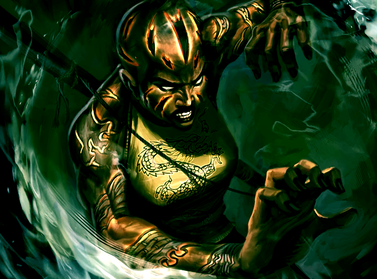
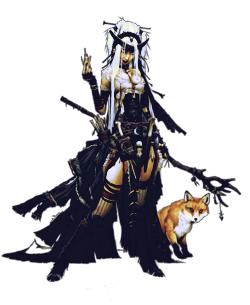
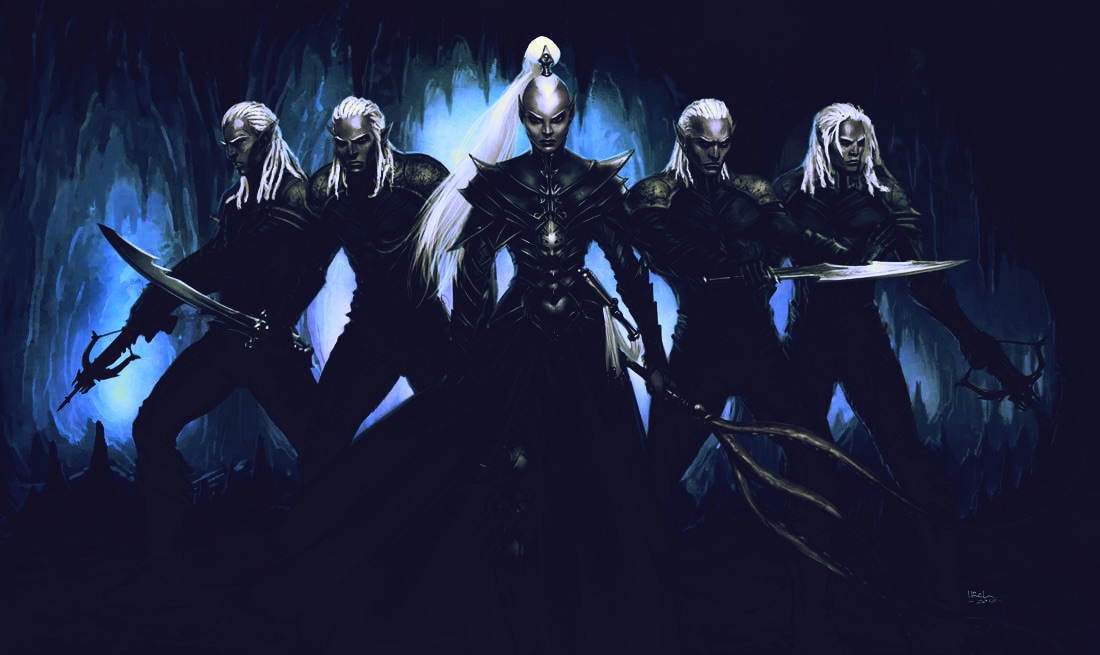
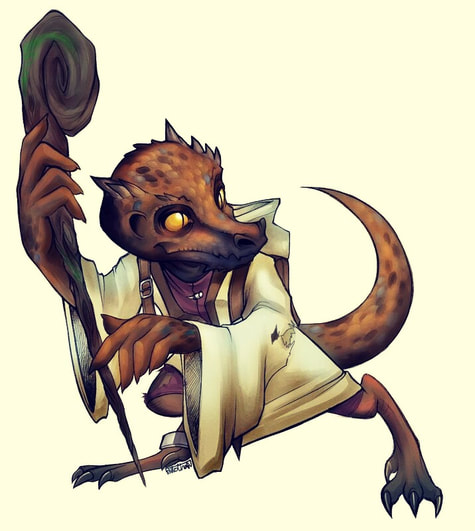
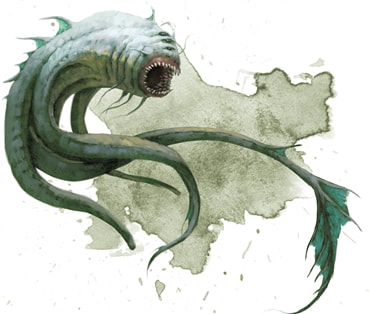
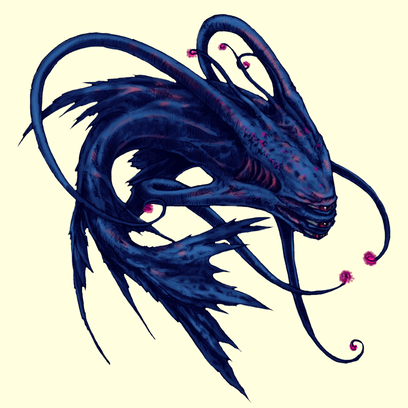
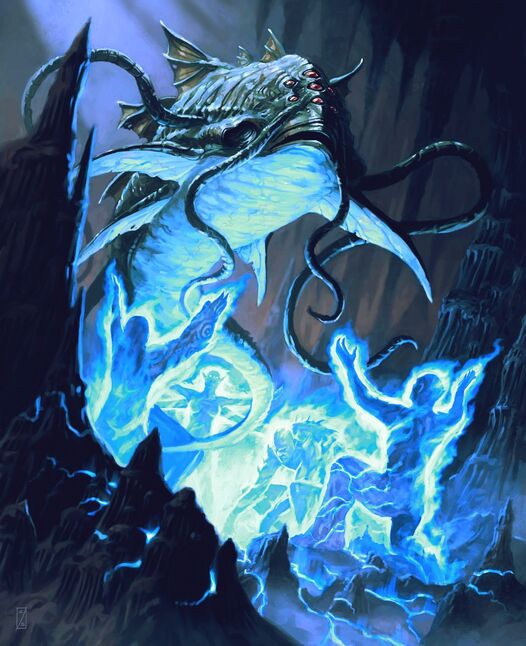
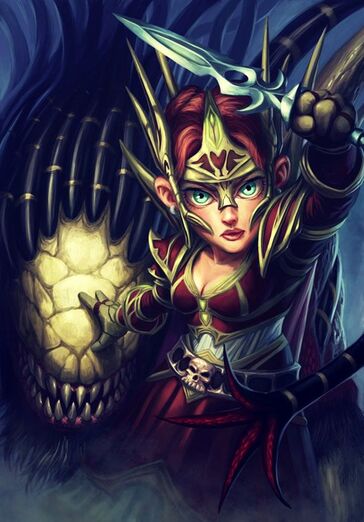
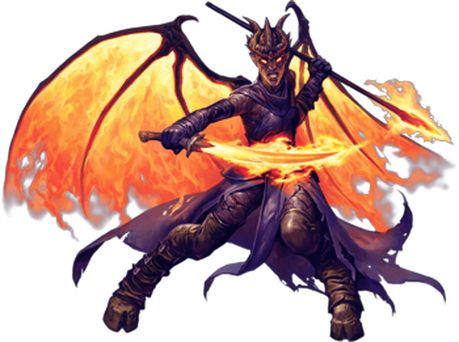
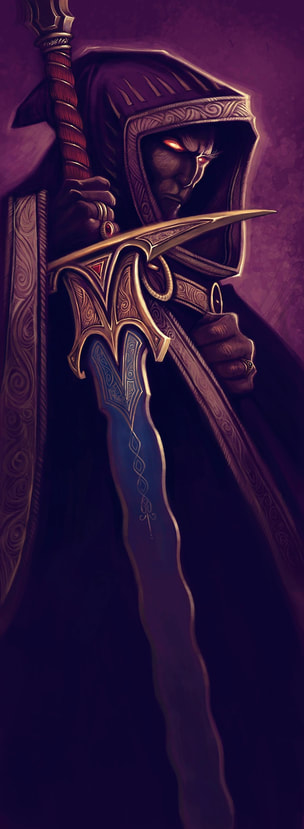

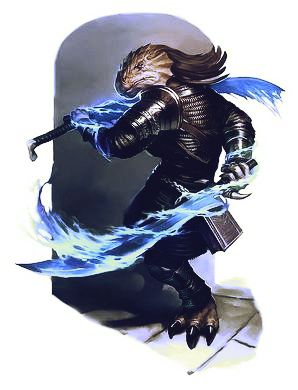
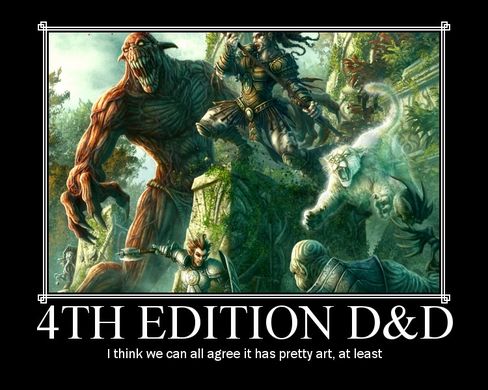
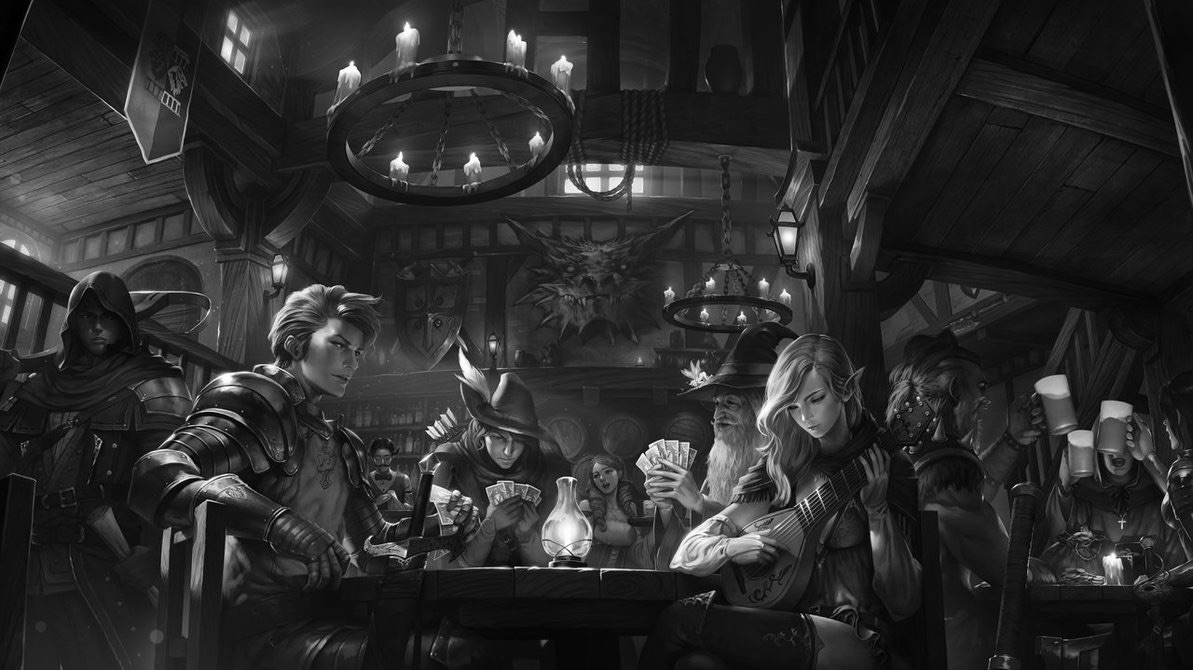
 RSS Feed
RSS Feed